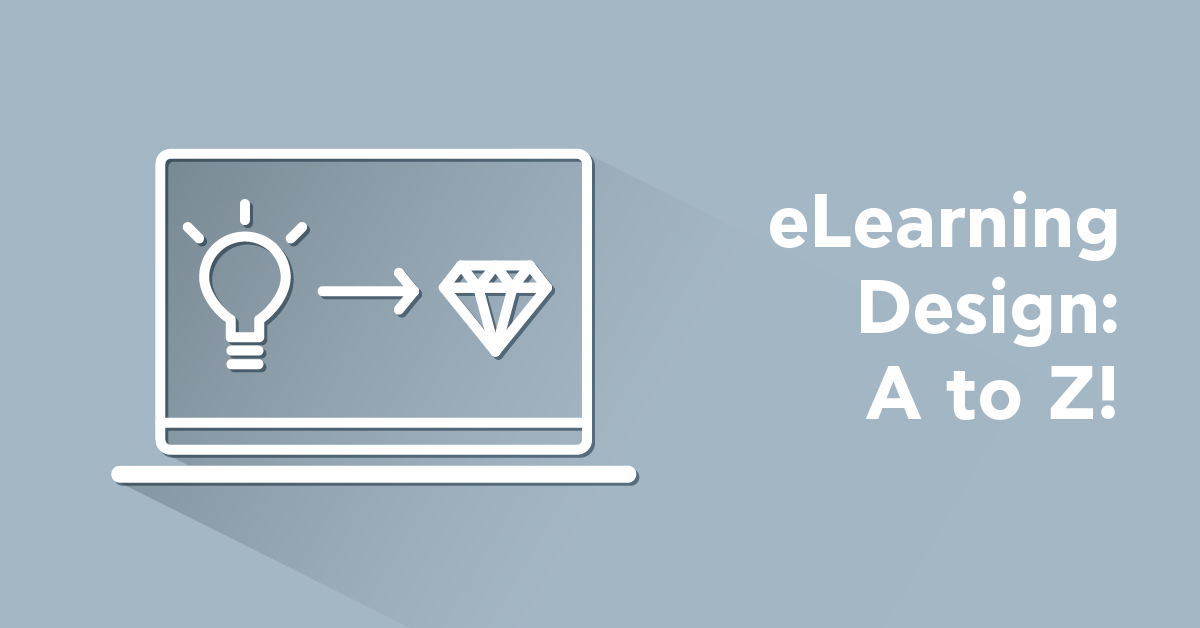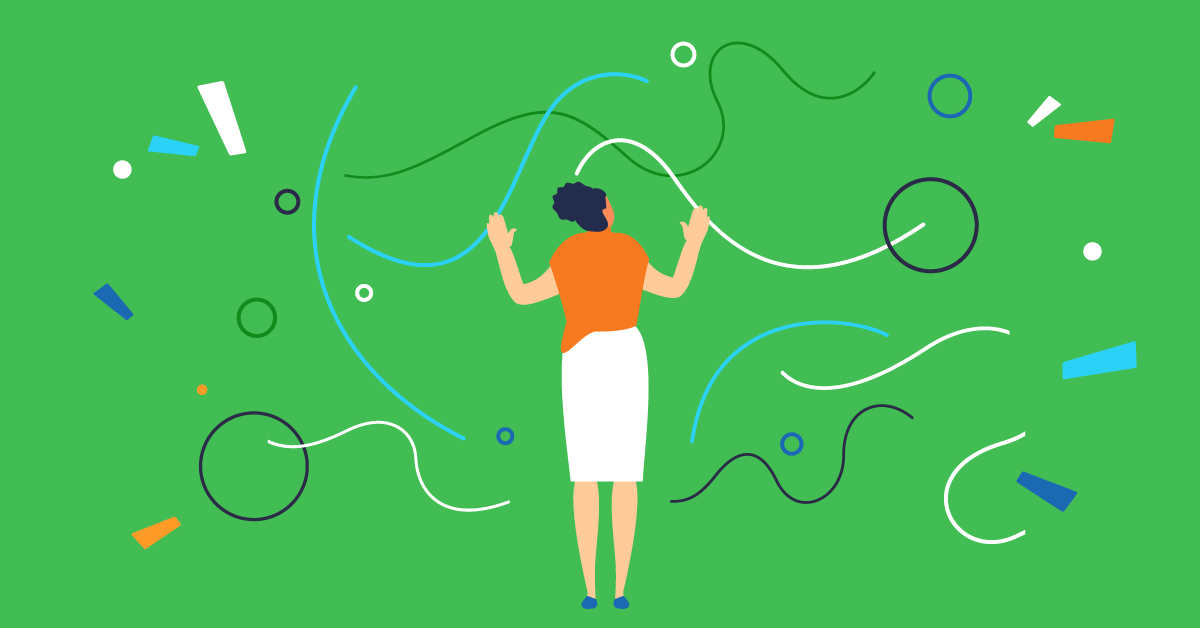In its early form, corporate training was based on the principle that upskilling workers led to increased production and bigger profits. So, with economic success at its heart, L&D was designed with the organization in mind, not the employee. Learning experience design has come to change that concept.
Digital transformation, new generations of employees, evolving mindsets, and a future-focused approach have all prompted a shift in the traditional approach to learning and development. Along with different criteria for measuring success.
One of the biggest shifts in emphasis is the realization that putting employees, not organizations, first is the cornerstone of a progressive and impactful learning experience.
Here’s where learning experience design (LXD) comes in. Created with the employee in mind, LXD is subtly transforming the world of corporate training by delivering memorable, enjoyable, and individual learning experiences that achieve better eLearning outcomes.
But how? Let’s take a look.
What is learning experience design (LXD)?
LXD is what it says — a neat package of three different elements: learning, experience, and design. Delivering an outcome that’s greater than the sum of its parts, learning experience design combines these three elements to create a learning process centered around each user and their individual learning outcomes or goals.
Learning
With learning experience design, the focus is on an individual learning something and the process they go through, rather than a predefined program of training that’s delivered to them.
This shift promotes the learning experience as an unpredictable journey that sparks an employee’s ongoing engagement and interest. And not an isolated task that’s prescribed, delivered, and completed before the learner moves onto something different.
Experience
Life is, in essence, a collection of experiences. Experiences form impressions — this is how we learn. And it’s this understanding that leads to the experiential approach so integral to learning experience design in the workplace.
Rather than setting tasks, which is where traditional corporate training tends to focus, learning experience design creates experiences that the user can interact with. These experiences solidify knowledge, provide relevance, provoke emotions, and produce insights.
But these experiences need context to give them sense. This is where learner experience design’s goal-oriented approach comes in. Learner experience design starts with the desired learning outcome and then includes activities, as part of the design process, that create experiences which help learners achieve their goals.
Design
Bringing both learning and experience elements together into a coherent whole, design — with a twist — is the cornerstone of LXD. The twist? What sets it apart from other design disciplines is a “design thinking” approach that puts people at the heart of its design process.
Traditional eLearning courses start with the desired outcome and direct users, step by step, down a clear path that leads to that outcome. Design thinking in learning and development does the opposite.
In many ways, an applied form of art, design thinking is a creative process that empowers the user to find their own way and define their own outcomes. Seeking first to understand, then to define, ideate, and test, its ultimate goal is to produce aesthetically pleasing, elegant, and fresh solutions that support successful learning.
Don’t just tick the training box
Deliver an engaging learning experience with TalentLMS.
The training platform that users consistently rank #1.
Learning experience design vs. instructional design
So far, we’ve focused on learning experience design and its role in building and delivering training. But, what about instructional design (ID)? Aren’t they the same thing?
Well, yes, there are similarities. But, dive deeper and the differences become apparent.
Science vs. art
A creative approach to design defines learning experience design. And it’s what most sets it apart from instructional design. From the skills required to the methods and tools used, learning experience design takes its inspiration and intention from the world of art.
Instructional design, on the other hand, takes its lead from the world of science using an analytical, linear, and methodical approach to design.
Teaching vs. learning
Instructional design has its roots in a training development approach used by the US army during World War II. Based on the principles of instruction, learning, and human behavior, the aim of training was to ensure that thousands of soldiers all assimilated the same knowledge and understanding. As a result, learning materials were rigidly structured and designed to provide clarity above all else.
While ID has evolved since then, its core emphasis is on directing and delivering a structured, clear, and directional program of learning to a passive audience through an instructor. This differs greatly from the human-centered, active learning approach that typifies learning experience design.
Planned vs. unpredictable
Another difference separating learning experience design from instructional design is the process. Instructional design starts with solutions already in place and uses its process to lead learners to those solutions.
Learning experience design uses processes to experiment and find solutions, giving learners space and opportunity to discover what works for them.
Tasks vs. experiences
The traditional approach of instructional design focuses on the completion of tasks. This approach has its merits: it’s easy to deliver, familiar, safe, and standardized. But it rarely engages the audience or provides any meaningful associations.
The experiential approach of learning experience design draws learners in by encouraging them to engage emotionally, physically, and mentally with their own learning.
The principles of learning experience design
Learning experience design puts the learner first. But how? Here are 5 key principles that support this:
1. Understand and adapt
People learn differently. We all have different aspirations and motivators, different preferences in terms of technologies and tools, different desired outcomes, varying levels of experience and knowledge, and different learning environments.
Learning experience designers get to know their learners and use personas and tools to tailor the learning experience to reflect this.
2. Promote the positive
At every touchpoint, learning experience design seeks to motivate and engage the audience through meaningful content and powerful interactions. Why? Because a positive experience leads to higher levels of engagement and success for both the course and its learners.
3. Take them on a journey
Learning experience design isn’t about reaching a destination, it’s about how you get there and what you learn along the way. Think round-the-world adventure, not there-and-back-in-a-day trip.
4. Who’s in control?
Great design thinking in learning empowers learners, giving them the tools, access, and motivation they need to control and navigate their own learning journey.
5. Everyone’s learning
Just like the audience, learning experience designers are learning, too. They have the space and freedom to be creative, to adapt, ideate and iterate, and test out ideas, designs, and prototypes as they go.

Learning experience design in action
So far, we’ve talked about the theory of learning experience design, but how does it work in practice?
When it comes to applying a design thinking approach to your own L&D courses here are a few things to consider:
Choose your color palette wisely
In 2011, Gaines & Curry explored the effects of color on learning behavior. And they found that color choices have a big impact on learner attitudes, comprehension, and retention.
Colors provoke strong emotional and psychological responses in people, so it’s important to get the balance (as well as the color palette) right to prevent cognitive overload.
Use graphics to support your learning
People have better recall of visual content than text (see the picture superiority effect). Which is why a successful learning experience showcases graphic elements — illustrations, diagrams, charts, animations, and photos — over written content.
But, the form has to justify the means. Choose your graphic elements carefully to make sure they match your learners’ preferences and learning ecosystem.
Meet TalentLibrary™
A growing collection of ready-made courses that cover the soft skills
your teams need for success at work![]()

Make navigation seamless and intuitive
If your navigation design is clunky, unintuitive, and inconsistent, chances are your learner will come away remembering that and not much else. The best navigation designs in learning are those that the learner barely registers.
Providing a natural and instinctive user journey empowers the learner to interact and engage confidently and enjoyably with your course.
Do your research
Before you start building your course, you need to build up your knowledge. Start with some on-the-ground fact-finding (learn about the people you’re designing the course for, their different learning environments, goals, expectations, and experiences).
Then, do your reading. Blend practical knowledge with the latest research around cognitive science and user/learner psychology.
Consider the senses
LXD is rooted in a design thinking approach. Aesthetically pleasing and holistically designed, learner experience designers consider all the senses — from the tone of the written content to the look and feel of the learning materials.
Check and double-check accessibility
Inclusivity — from ability and age, race and culture to language and gender — is fundamental to learning experience design and informs every decision taken. Test and check the accessibility of every element and at every stage of the development process.
Lessons learned
And breathe.
OK, yes, there’s quite a bit involved in creating a successful learning experience design program. It isn’t necessarily the quickest or easiest approach to deliver. And you may face challenges from stakeholders who prefer the familiar, safe, and standardized predictability of traditional, instructor-led courses.
Putting an individual’s learning needs over those of the organization is, after all, a huge shift in mindset for many. But, treating L&D like a box-ticking exercise isn’t sustainable.
To future-proof your L&D offering, show employees you’re committed to their ongoing development by taking them on a learning journey. Give them beautifully presented, meaningful learning experiences they’ll remember, enjoy, and grow from. And, while you may have put the learner first, higher retention rates and a more engaged and informed workforce mean it’s good for business, too.
What are you waiting for?
| Tags: eLearning Design



